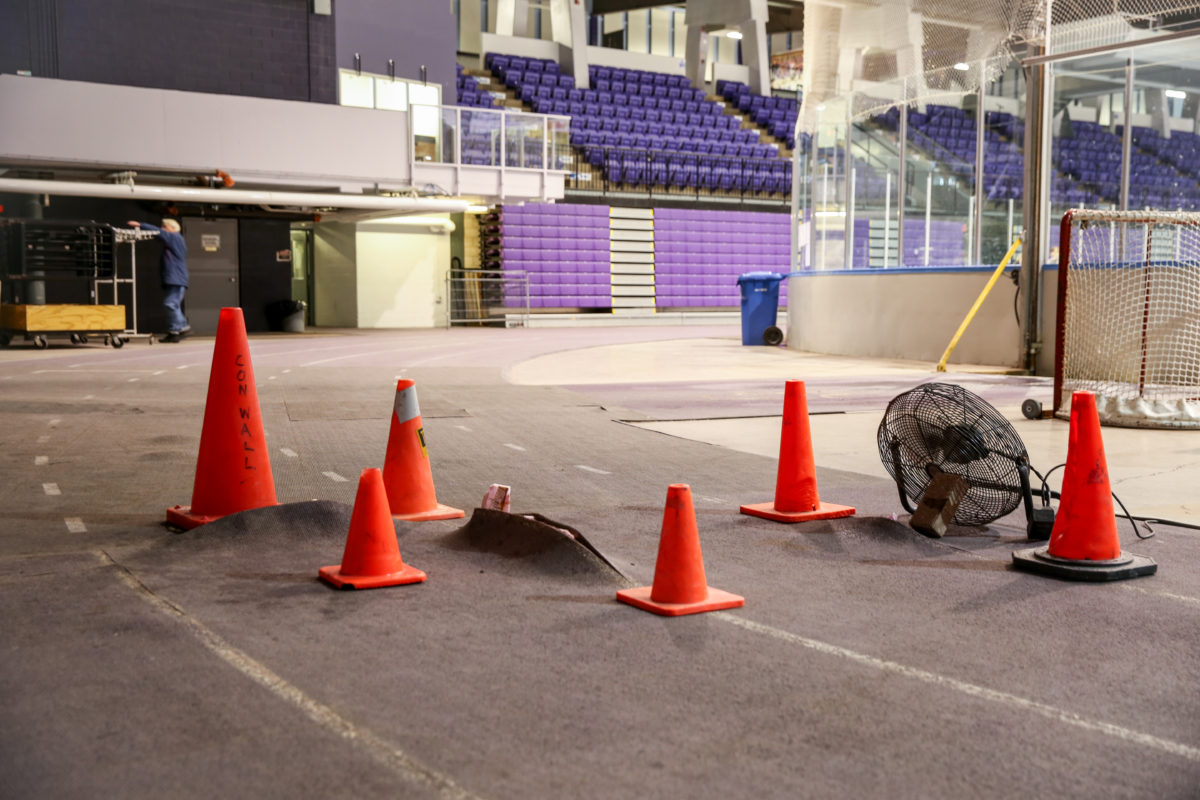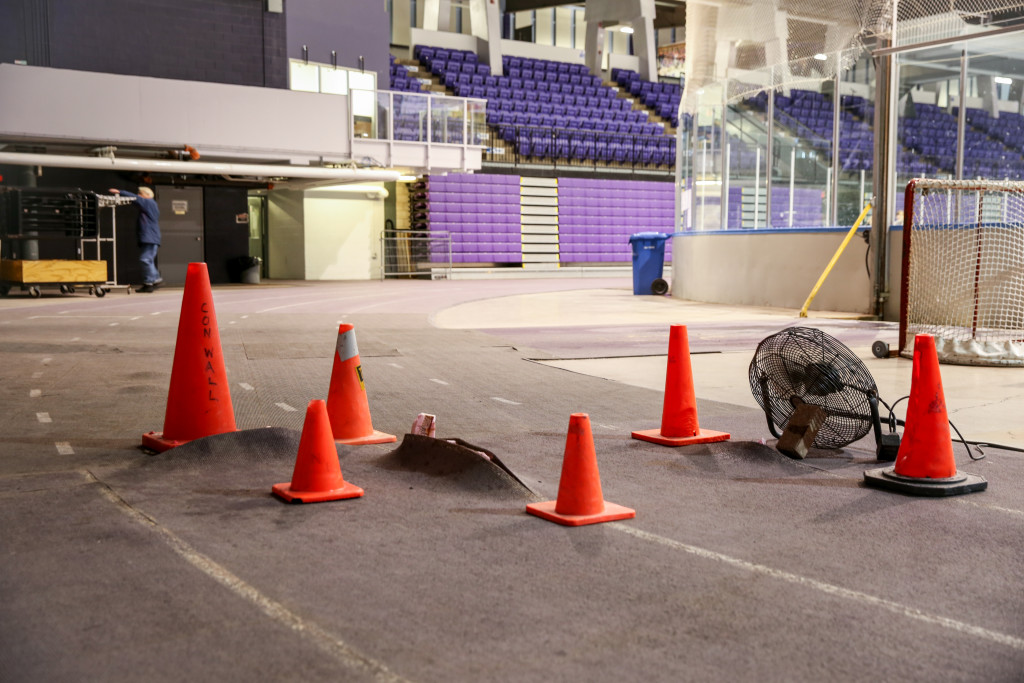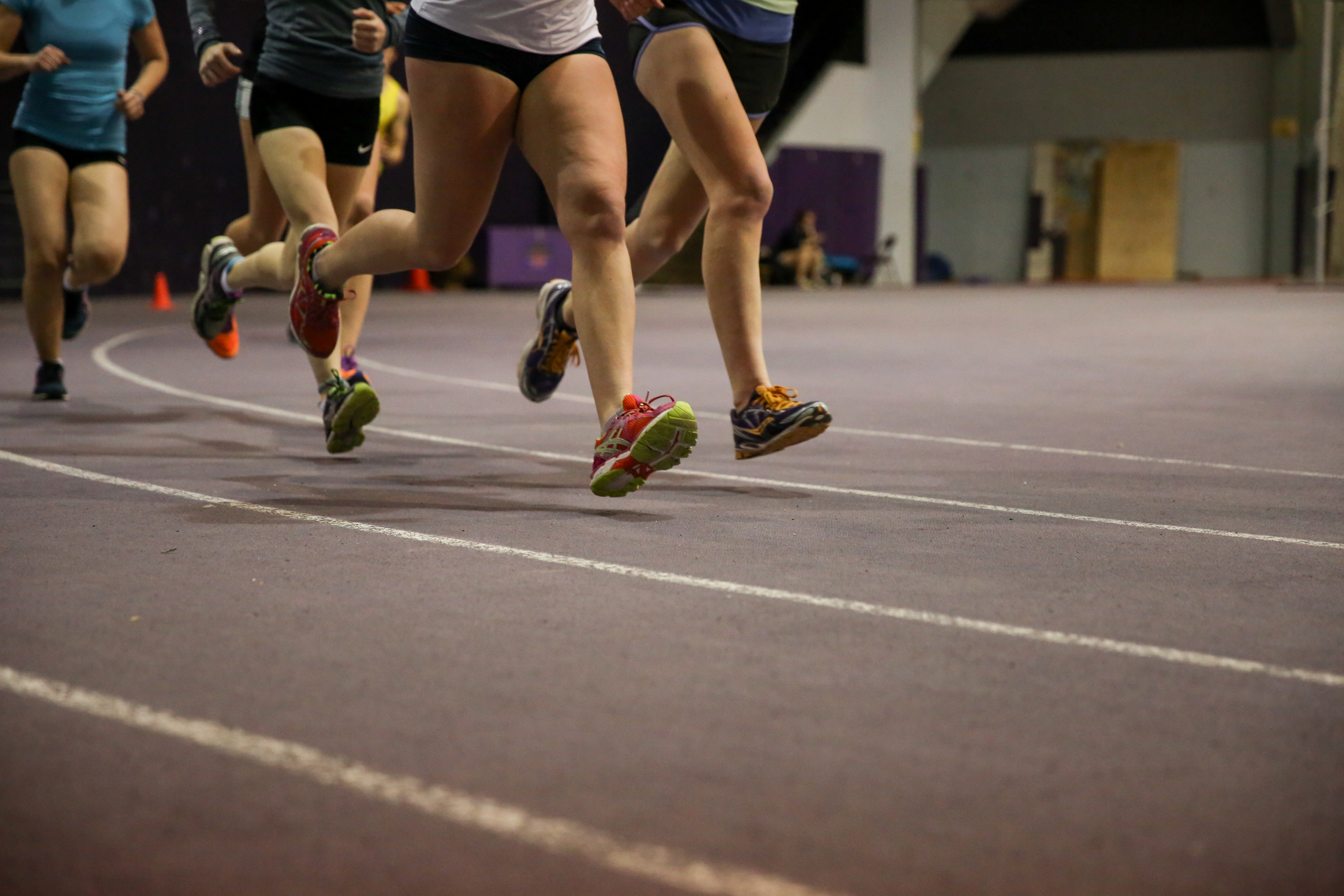One of Canada’s top universities trains in a hockey rink
One of Canada's top universities for track and field, Western, continues to train on a deteriorated track within the confines of an ice rink


Running, hockey, tennis, baseball and field hockey — these sports generally require specialized training facilities independent of each other.
Yet, according to Western University’s Thompson Recreation and Athletic Centre (TRAC) website, all five of those sports are accommodated inside Western’s main varsity sports facility. The facility has a particular focus on “year-round ice activities.”
The University of Western Ontario, popularly known as Western, is situated in London, Ont., and is home to one of Canada’s top university indoor track and field teams. They were the winners of the aggregate title at the CIS Indoor Track and Field Championships in 2012 (men) and in 2002 (women). Both teams (named the Mustangs) are considered favourites for a top-three position at the 2016 championships in Toronto based on early season rankings.
So why do they train in a facility that has a focus on the ice rink? The city of roughly 365,000 has no viable indoor track alternative to TRAC meaning that the entire Mustangs team — sprinters, distance runners, throwers and jumpers — train on a 200m Mondo track around the perimeter of a full-size hockey rink. Mondo is considered the best track surface material in international athletics.
“Because the hockey rink is enclosed by the indoor track, the Zamboni has seriously worn out a portion of the track,” says Shane Roberts, a distance runner for Western and sports editor for The Gazette, the university’s student newspaper. “In addition, there’s interference from hockey players entering and exiting the dressing rooms. The whole area becomes congested.”
Recruiting
With problems such as these, the university is taking a hit when it comes to recruiters sealing the deal with top athletic talent.
World-class facilities exist at nearby schools like Windsor, York, Guelph (all Ontario-based institutions) and U.S. tracks liked SPIRE Institute (Ohio) have been attracting athletes for home meets and, more importantly, enrollment. It becomes increasingly more difficult for Western to do the same as the condition of the indoor track and field facility deteriorates.
“It’s tough, we can’t hide the current state of our indoor facility,” said Vickie Croley, Western’s track and field head coach, a position she has held for more than 20 years. (Fun fact: She is also the coach of Pan Am Games decathlon champion Damian Warner.) “We’ve lost numerous recruits to rival universities because of it.”
Still, the team has continually been a mainstay on the Canadian university indoor scene, a trend that Croley attributes to the team’s assistant coaches and medical personnel. Roberts echoes Croley’s comments adding that academics has been a big selling point for incoming high school athletes and transferring students.

Funding
As Croley explains, the Western Mustangs track and field team has three main funding sources in addition to the regular program budget — two of which are associated with the Don Wright Award and the Don Wright indoor track and field meet. Wright was a Western track and field star between 1929 and 1933 and has donated millions to the university (the Faculty of Music and the all-weather track at TD Stadium bear his name).
The third source is a donation from the university’s icon which was given for the building of a new facility. The team was granted a significant sum of money earmarked for a new indoor facility. So why not just repair damage done by the Zamboni now? Language in the donor agreement specified that the money be used exclusively for the building of a new facility, not for renovations or repairs.
The agreement was valid up until 2015. Then, if not used, the money was to go to the varsity athletic department’s ‘highest priority.’ Since no new facility was built for the track team, the money helped fund other projects which were decided upon by the Western varsity athletics department.
“Don’s passion at Western was, most importantly, music and track and field. Knowing that his money isn’t being directed to the track and field program is extremely disappointing to me,” says coach Croley.
Croley was under the strong impression that the current Thompson track was to be resurfaced this spring but found out recently that this has been postponed. If the plan is to gain traction, it will likely be through the regular Sport and Recreation Services (SRS) budget, Croley adds.
One option, brought up last year, was to add a dome over TD Waterhouse Stadium, which would essentially winterize the outdoor facility. However, the logistics of where the stadium is located and the material under which the track is built later proved to be insurmountable hurdles.

Home meet
Though it’s a large source of funding, the previously mentioned home meet is not without drawbacks. Even to host the Don Wright Team Challenge & Invitational, the team needs to rent out the ice surface and compensate the facility for lost ice rental revenue. In order to fund the meet and make it competitive, the team has to provide incentive for incoming athletes to subsidize the competitiveness of the track.
The team continually invests in hosting its annual meet but it’s unclear whether the same can be said about infrastructure investment on the part of the university. The surface is more than 20 years old. That’s not atypical of a moderately-used Mondo track but with the array of teams using the facility, there’s more wear-and-tear done to it. The photos do justice.
To attract nearby teams, Western doesn’t charge entry fees to its home meet, provides performance prizes in the form of apparel and provides a full-team dinner at the end.
Some Canadian university (CIS) schools don’t require an indoor track facility. Trinity Western University and the University of Victoria are two examples. With that said though, it’s worth noting that the post-secondary level in Canada doesn’t have an outdoor season. Indoor track is the pinnacle, unless one competes in cross-country, during the Canadian university athletics season. This puts stress on the importance of having a proper indoor facility to train at, especially for schools which are trying to stand out in a highly populated area of Canada like Ontario.
The Future
Thérèse Quigley, director of sports and recreation services at the University of Western Ontario, told Canadian Running that future plans for renovation and repairs in regards to the indoor track and field facility “will be known in late February.”
Frank Erle, manager of athletic facilities and the Mustangs’ horizontal jumps coach, added that “the university’s athletic budget is still being finalized” and the extent of the repairs will not be known until next month.
Two possible outcomes (besides the status quo) are that the university will replace the current track surface meaning the team will continue to train in the same facility with the same Zamboni and team interference. That puts the longevity of the repairs into question. One plus side is that the current facility is quite humid, which reduces the effects of track cough (“track hack”).
The other possibility, the more ideal adds Croley, is that the university will fund a new facility, either an ice pad (so hockey vacates the TRAC) or a building intended for track and field. Which of these options is to become the reality is something that the student athletes and coaches will have to wait until next month to find out about.


